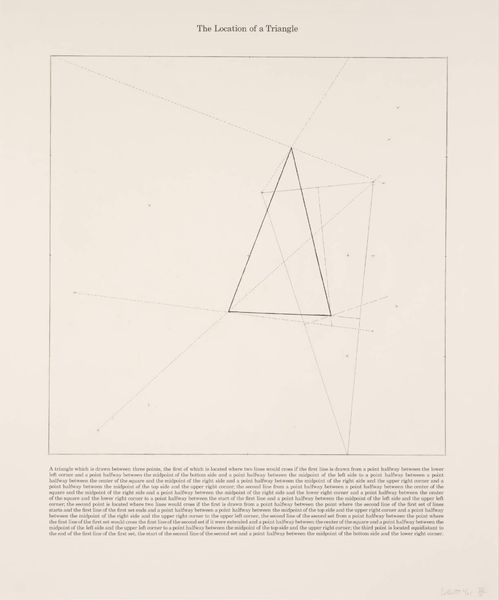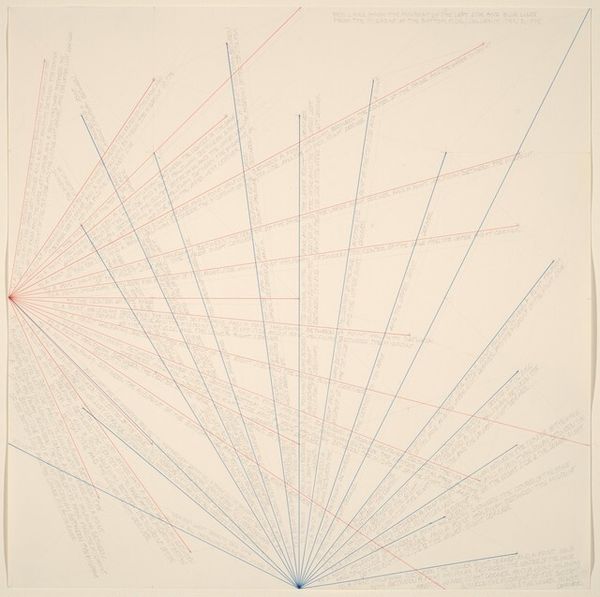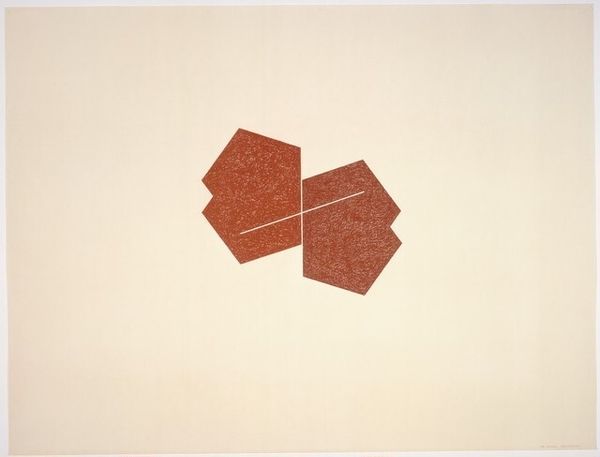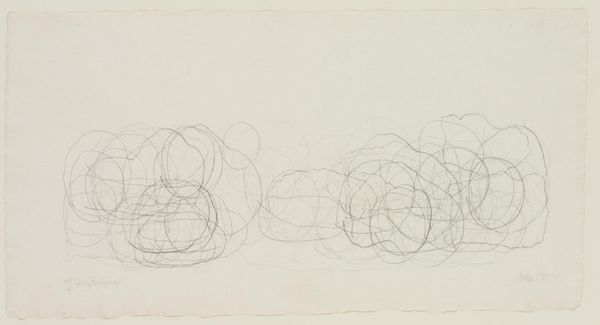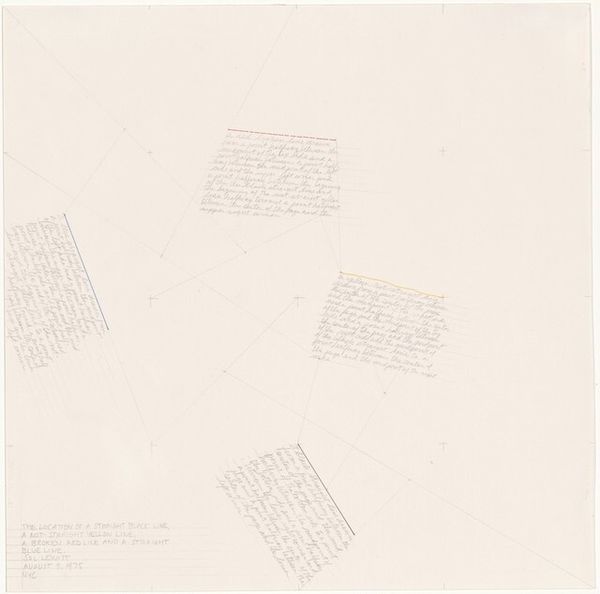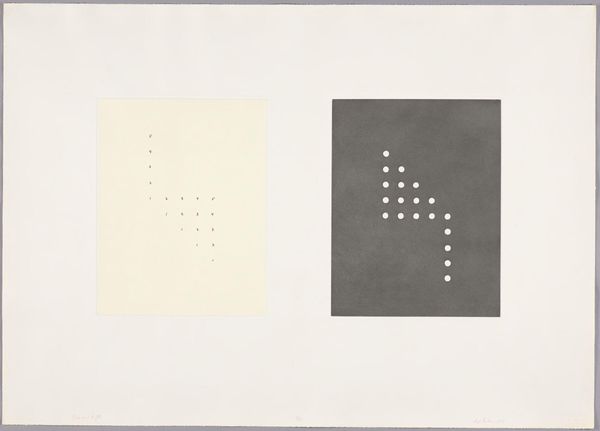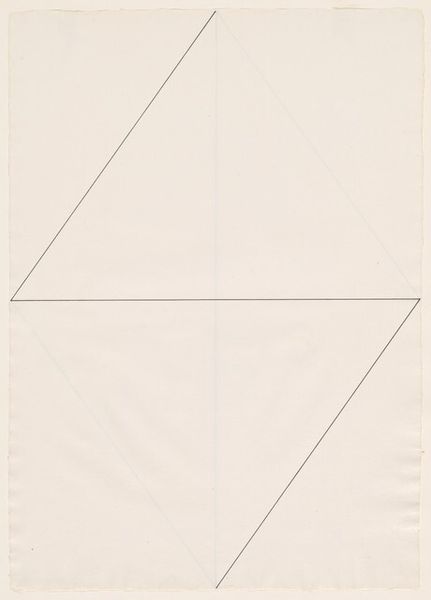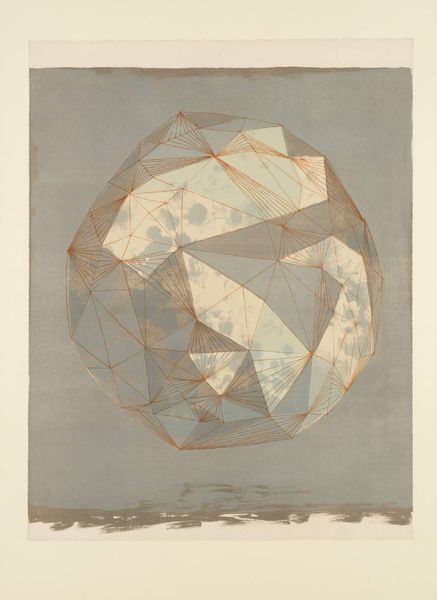
drawing
#
photo of handprinted image
#
drawing
#
light pencil work
#
ink paper printed
#
light coloured
#
old engraving style
#
hand drawn type
#
linocut print
#
fading type
#
watercolour illustration
#
golden font
Dimensions: overall: 38.1 x 38.1 cm (15 x 15 in.)
Copyright: National Gallery of Art: CC0 1.0
Editor: Here we have Sol LeWitt's "The Location of a Yellow, Red and Blue Circle," created in 1975, it looks like a drawing or print on paper, maybe even hand-printed? It's rather subtle and faint, like a map or a set of instructions. What do you see in this piece, particularly in relation to its materiality? Curator: What interests me most is LeWitt’s emphasis on the instructions, the “how-to” of making the artwork. Look closely: the circles aren’t perfectly rendered, but are almost defined by the hand-written texts inscribed within them. These texts are instructions. The "art" is arguably not just the final product, the print, but the whole process of its conceptualization and, crucially, its production. Editor: So the work is less about the aesthetic outcome, and more about… the labour involved? Is LeWitt commenting on artistic labor in some way? Curator: Precisely! We can interpret LeWitt as democratizing the artistic process. The instructions could theoretically be executed by anyone, shifting the focus away from the artist's singular skill. Consider how this challenges the traditional hierarchy separating high art from the more mundane activities of instruction-giving and manual execution, such as drafting and note-taking. What implications arise by positioning "execution" and the creation of this "product" at its center? Editor: I see what you mean. It’s interesting to think about the print not just as an object of art, but as documentation of a process, available for reproduction or variation by anyone. This really changes how we value the finished piece, if it is "finished" at all, versus the labor that goes into its making. Curator: Absolutely, the instructions embedded into its materiality serve as its blueprint for an artwork in which labor and concept become one.
Comments
No comments
Be the first to comment and join the conversation on the ultimate creative platform.

